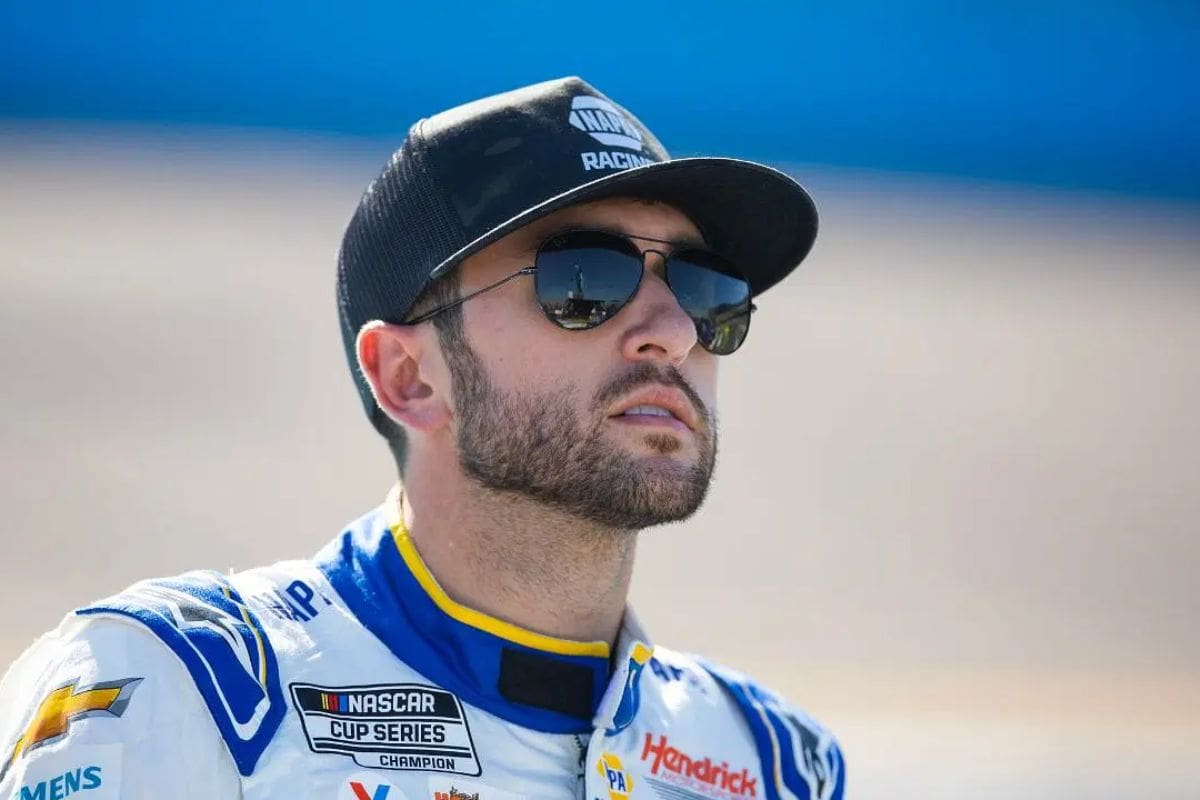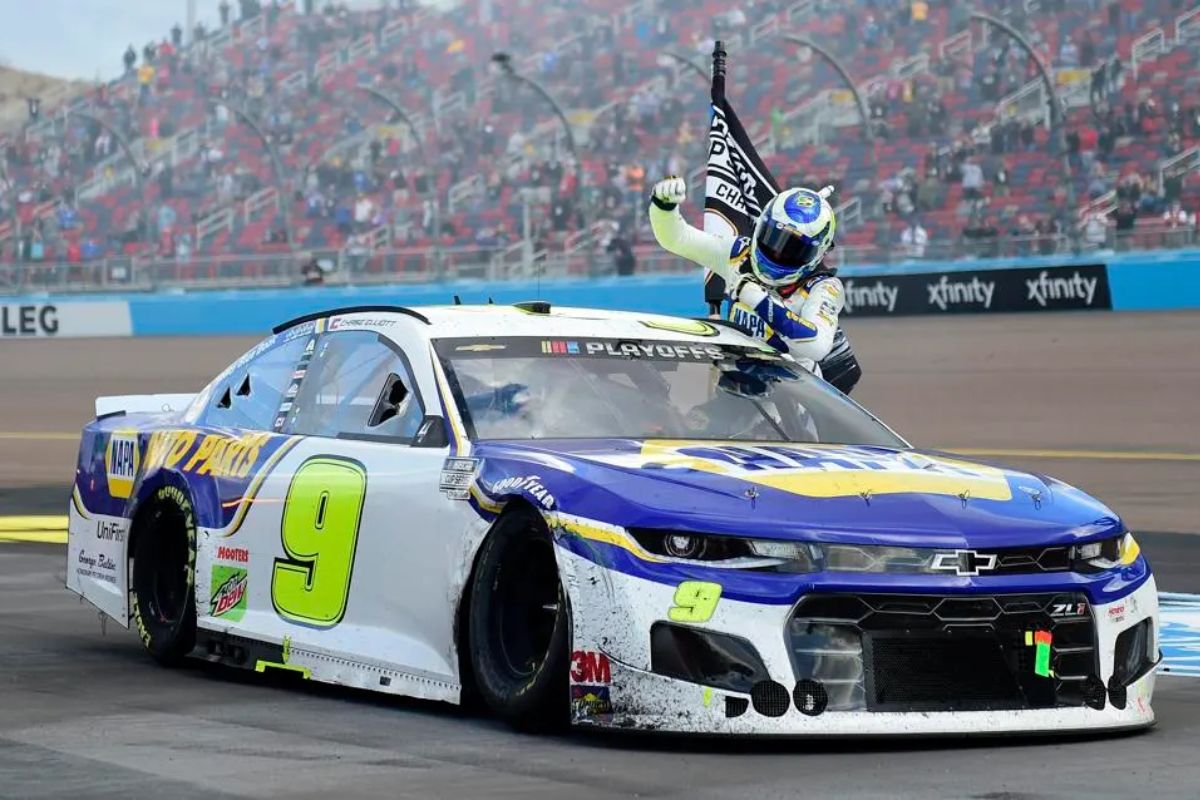NASCAR’s TV Dominance Surges: NASCAR’s TV dominance hits new levels, surpassing F1 and INDYCAR. Chase Elliott’s move hints at a significant shift in motorsports. While NASCAR’s rise continues, F1 and INDYCAR struggle in viewership. Factors like engaging social media, key endorsements, and event excitement drive NASCAR’s spike. A Netflix docuseries humanizes drivers and boosts social media presence. Combining traditional and modern approaches, NASCAR’s success formula sets the pace for the racing world. Elliott’s move is just the tip of the iceberg in NASCAR’s story of triumph.
Key Takeaways
- NASCAR’s TV dominance attributed to high viewership surpassing F1 and INDYCAR combined.
- Factors like social media strategy, celebrity endorsements, and sponsorships contribute to NASCAR’s success.
- Impactful Netflix docuseries humanizes drivers, engages fans, and modernizes NASCAR’s approach.
- Blend of old-school traditions with modern strategies enhances fan experience and engagement.
- Chase Elliott’s prominence further boosts NASCAR’s viewership, leaving F1 and INDYCAR behind.
NASCAR’s Rising Popularity and TV Dominance
NASCAR’s rise to unparalleled TV dominance in the racing world is a reflection of its surging popularity and unwavering appeal to American viewers. With a significant new TV deal valued at $7.7 billion, NASCAR’s TV ratings are experiencing an upward trajectory, surpassing the combined ratings of F1 and INDYCAR. Despite a minor viewership decline in 2023, NASCAR is making a remarkable comeback, resonating strongly with fans across the nation.
The Daytona 500, which attracted six million viewers, demonstrated NASCAR’s enduring appeal, especially evident as the race was rescheduled to Monday evening due to inclement weather. Subsequent events like the Pennzoil 400 in Las Vegas, the Phoenix race, and the Bristol race all saw substantial viewership numbers, showcasing a 19% increase from the previous year’s finale. Particularly, the Bristol race witnessed a 10% surge in viewership, drawing in 3.81 million viewers on FOX.
This surge in TV ratings can be attributed to NASCAR’s effective marketing strategies, robust fan engagement initiatives, and lucrative sponsorship deals. By continually enhancing the viewing experience and cultivating a strong connection with its audience, NASCAR has solidified its position as a dominant force in the racing world, leaving competitors like F1 and INDYCAR aiming to match its success.

F1 and INDYCAR Lagging Behind in Viewership
In comparison to NASCAR’s remarkable surge in TV viewership, both F1 and INDYCAR are experiencing a notable decline in their respective viewership numbers. While NASCAR is hitting new highs, F1 and INDYCAR aren’t seeing the same level of fan engagement. The INDYCAR season opener in St. Petersburg only attracted around one million viewers, and F1’s race in Saudi Arabia managed to pull in approximately 900k viewers on ESPN.
When analyzing the reasons behind F1 and INDYCAR’s lagging viewership, several key factors come into play. These include racing competition, marketing strategies, viewer engagement, driver personalities, and broadcast platforms. NASCAR seems to have found a winning formula in these areas, which has contributed to its surge in popularity and TV dominance.
To illustrate the differences in viewership numbers and engagement levels further, the table below provides a concise comparison between NASCAR, F1, and INDYCAR:
| Aspect | NASCAR | F1 | INDYCAR |
|---|---|---|---|
| Viewership | Surging | Declining | Declining |
| Marketing | Effective | Varied strategies | Needs improvement |
| Driver Personalities | Strong fan connections | Varied personas | Developing fan base |
| Broadcast Platforms | Wide coverage | Limited exposure | Varied platforms |
These aspects shed light on why NASCAR currently holds the lead in TV viewership, leaving F1 and INDYCAR struggling to keep up.
Factors Driving NASCAR’s Viewership Spike
With NASCAR’s viewership surge making headlines, it is vital to understand the driving forces behind this remarkable uptick in interest. Several factors have contributed to NASCAR’s recent spike in viewership:
- Social media: The strategic use of social media platforms by NASCAR has allowed the sport to engage with fans on a more personal level, creating a sense of community and excitement around races.
- Celebrity endorsements: High-profile endorsements from celebrities have helped bring NASCAR into the mainstream spotlight, attracting new audiences who may not have previously been interested in the sport.
- Sponsorship deals: NASCAR’s ability to secure lucrative sponsorship deals has not only provided financial stability but has also increased the visibility of the sport, drawing in more viewers and fans.
These factors, combined with the thrill of live events and the appeal of NASCAR’s merchandise, have all played a pivotal role in driving the recent surge in viewership. As NASCAR continues to leverage social media, celebrity endorsements, sponsorship deals, live events, and merchandise sales to enhance the fan experience, the future looks promising for the sport’s continued growth and dominance in the TV landscape.
NASCAR Continues to 📈 over last year
Indycar there is no previous race to compare to
And Formula 1 the broadcast peaked at 627,000 viewers 20 minutes after Verstappen’s DNF#nascar #formula1 #indycar pic.twitter.com/IHda3QSOEd
— The Money Lap (@themoneylap) March 26, 2024
The Impact of the Netflix Docuseries on NASCAR’s Strategy
The Netflix Docuseries has profoundly influenced NASCAR’s strategic approach, targeting casual fans and enhancing social media engagement. Shows like NASCAR: Full Speed serve as NASCAR’s proof of concept for attracting the casual audience and increasing online buzz. Denny Hamlin emphasizes the importance of these series, highlighting their role in drawing in new viewers and keeping existing fans engaged on social platforms.
By focusing on creating a connection between fans and drivers, NASCAR is investing in long-term fan loyalty and brand exposure. The docuseries shine a spotlight on the personalities of drivers, humanizing them and making them more relatable to the audience. This strategy not only builds a stronger emotional bond between fans and the sport but also generates conversations and interactions online, driving up online engagement levels significantly.
Through the lens of the Netflix Docuseries, NASCAR is crafting a narrative that goes beyond the racetrack, diving into the personal stories and journeys of its drivers. This approach not only appeals to casual viewers but also solidifies the connection with existing fans, fostering a sense of community and belonging. By leveraging social media platforms to amplify these narratives, NASCAR is expanding its reach and creating a more interactive and immersive fan experience. The strategic use of the docuseries is a proof of NASCAR’s commitment to modernizing its approach while staying true to its roots, ultimately securing its position as a powerhouse in the world of motorsports.
NASCAR’s Formula for Success: Blending Old-School with Modern Strategies
NASCAR’s success stems from its adept blending of traditional racing values with innovative modern strategies, propelling the sport to new heights of popularity and engagement. This fusion of old-school charm with contemporary approaches has enabled NASCAR to stay ahead in the racing world, leaving competitors like F1 and INDYCAR in the rearview mirror.
- Fan engagement: By focusing on driver narratives and showcasing the stories of up-and-coming racers, NASCAR has successfully captured the hearts of fans beyond the core audience. This emphasis on connecting with viewers on a personal level has contributed notably to the sport’s growing popularity.
- Social media: Leveraging social media platforms to interact with fans in real-time and create buzz around races has been a game-changer for NASCAR. Engaging content, behind-the-scenes glimpses, and interactive experiences have helped broaden the sport’s reach and engage fans in new and exciting ways.
- Broadcast innovation: Pairing old-school broadcast traditions with modern technologies and innovative storytelling techniques has enhanced the overall viewing experience for NASCAR fans. The integration of cutting-edge graphics, in-depth analysis, and interactive features has made watching NASCAR races a more immersive and enthralling experience, keeping audiences hooked from start to finish.

In addition to these strategies, NASCAR’s strong online presence and strategic maneuvers have solidified its position as a frontrunner in the racing world, setting the pace for others to follow.
News in Brief
NASCAR’s TV dominance has surged ahead of F1 and INDYCAR, leaving them in the dust. The factors driving NASCAR’s viewership spike, including the impact of the Netflix docuseries, have contributed to its success. By blending old-school and modern strategies, NASCAR has found a winning formula that continues to attract audiences and solidify its position as a top racing series.
Our Reader’s Queries
Q: What has happened to Chase Elliott in Nascar?
A: Elliott expressed his desire to avoid a repeat of the challenging 2023 season. In addition to a shoulder injury, he suffered a broken left leg from a snowboarding accident. Furthermore, he faced suspension for retaliating against Denny Hamlin during the Coca-Cola 600 at Charlotte Motor Speedway.
Q: Has Chase Elliott ever won the Daytona 500?
A: Chase Elliott’s successful NASCAR Cup Series career includes 18 Cup victories and a Cup Series title, yet he has yet to clinch a Daytona 500 victory. His 0-for-9 record in the Daytona 500 is notable, although it falls short of the legendary droughts experienced by drivers like Waltrip, Earnhardt, or Kyle Busch.
Q: Who replaced Chase Elliott in NASCAR?
A: On June 3, 2023, at 3:59 p.m. in Madison, Illinois, Corey LaJoie missed what could have been the most significant phone call of his life, after eight years and 214 NASCAR Cup Series starts dedicated to pursuing his racing dreams.
Also Read: Fans Demand Justice for Chase Elliott: NASCAR Controversy Explodes!
